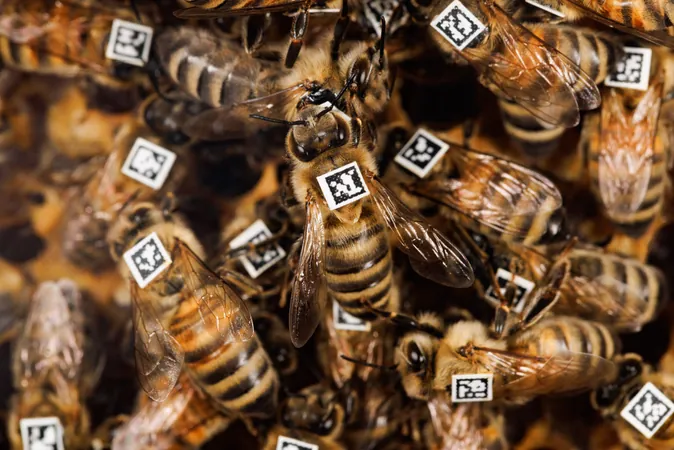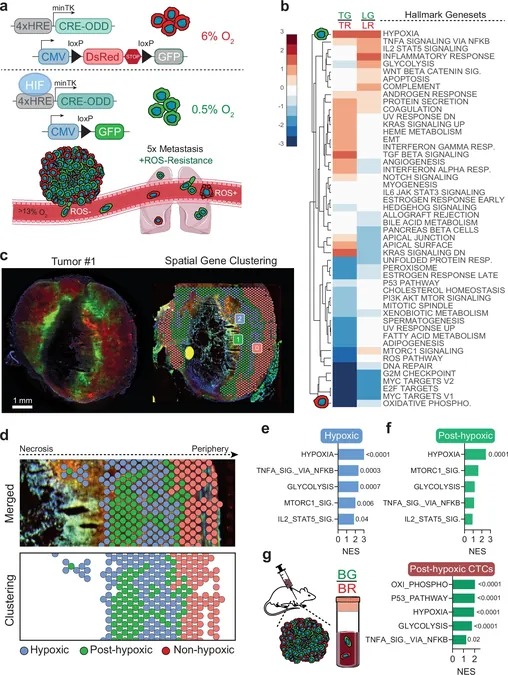
The Secret Honeybee Gene That Drives Collective Behavior Revealed!
2024-11-01
Author: Jia
Groundbreaking Research Unveiled
Groundbreaking research from Heinrich Heine University Düsseldorf (HHU) in collaboration with esteemed institutions in Frankfurt/Main, Oxford, and Würzburg has unveiled a genetic mechanism that dictates the complex social behaviors of honeybees (Apis mellifera). Published in the renowned journal *Science Advances*, this study shines a light on how collective behaviors—essential for the survival and efficiency of these insects—are inherited across generations.
Key Genetic Discovery
The team has pinpointed a gene known as doublesex (dsx) as the key player in programming the behaviors unique to honeybee workers. This discovery is pivotal because it connects genetic encoding to the social dynamics of these insects, characterized by exceptional teamwork in foraging for food, defending their hive, and raising their brood.
Expert Insights
Professor Dr. Martin Beye, head of the Institute of Evolutionary Genetics at HHU and the study's corresponding author, stated, “Previously, it was a mystery how such sophisticated behaviors were encoded in the honeybee genome. Our research establishes that these behaviors are not merely learned but are indeed inherited.”
Experimental Approach and Findings
To understand the role of the dsx gene, researchers conducted a series of experiments using CRISPR/Cas9 gene editing technology. They modified the dsx gene in specific bees, marking them with QR codes to track their activities within the hive via video monitoring. The data obtained was then meticulously analyzed with the help of artificial intelligence to identify the nuanced behavioral patterns of these worker bees.
Implications of Genetic Programming
Dr. Vivien Sommer, the study's first author, noted, “The dsx gene dictates the tasks a worker bee undertakes and their duration, including critical activities like larval care and food foraging.” This suggests a genetic blueprint guiding individual roles in the harmony of the hive.
Visualizing Neural Circuits
The research team also innovatively incorporated a green fluorescent protein into the genetic code to visualize neural circuits through fluorescence microscopy. This enabled them to explore how the dsx gene influences neuronal pathways responsible for these inherited behaviors.
Future Research Directions
As the researchers look ahead, they aim to bridge the findings at the individual bee level to the broader functioning of the bee colony as a 'superorganism.' PhD student Alina Sturm emphasized, “Our future work will dive deeper into understanding how individual genetic programming interconnects with the collective behaviors manifesting in large groups.”
Significance of the Findings
This research not only enhances our understanding of honeybee society but also opens avenues for exploring genetic influences on social structures in various species, potentially offering models for understanding communication and cooperation in the animal kingdom. The implications of these findings reach far beyond the hive, hinting at the intricate connections between genetics, behavior, and social organization across different species.
Conclusion
Stay tuned for more astonishing revelations from the world of honeybees!



 Brasil (PT)
Brasil (PT)
 Canada (EN)
Canada (EN)
 Chile (ES)
Chile (ES)
 España (ES)
España (ES)
 France (FR)
France (FR)
 Hong Kong (EN)
Hong Kong (EN)
 Italia (IT)
Italia (IT)
 日本 (JA)
日本 (JA)
 Magyarország (HU)
Magyarország (HU)
 Norge (NO)
Norge (NO)
 Polska (PL)
Polska (PL)
 Schweiz (DE)
Schweiz (DE)
 Singapore (EN)
Singapore (EN)
 Sverige (SV)
Sverige (SV)
 Suomi (FI)
Suomi (FI)
 Türkiye (TR)
Türkiye (TR)